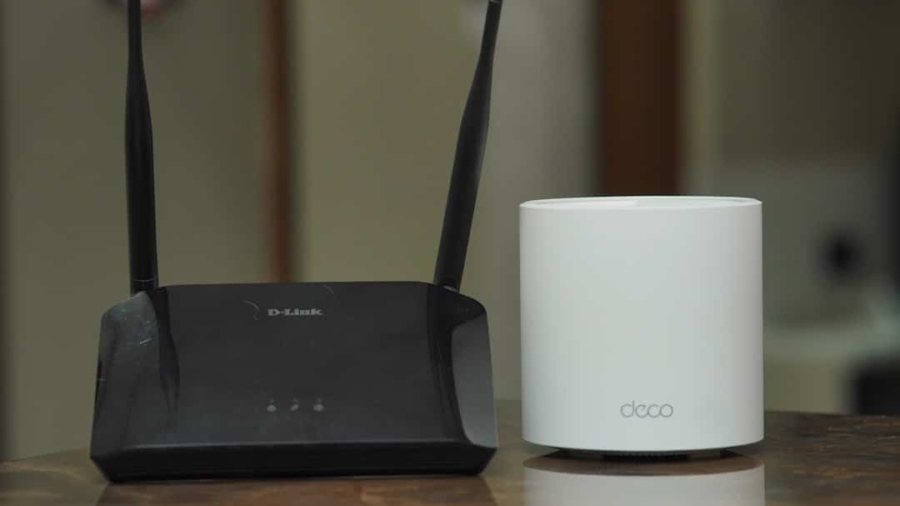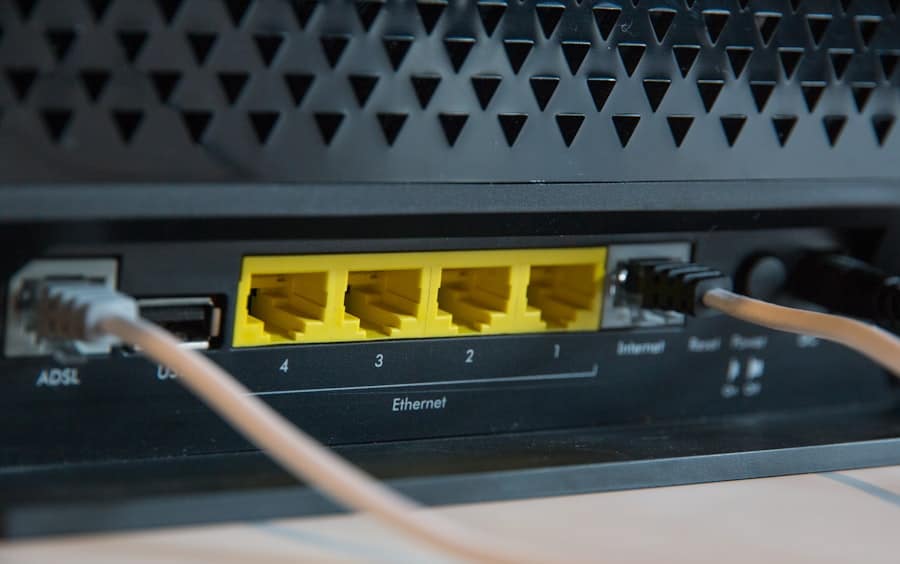In the rapidly evolving landscape of home networking, mesh networks have emerged as a revolutionary solution to the challenges posed by traditional Wi-Fi systems. Unlike conventional routers that rely on a single point of access, mesh networks utilize multiple interconnected nodes to create a seamless and expansive coverage area. This innovative approach addresses common issues such as dead zones and inconsistent signal strength, which are often experienced in larger homes or spaces with numerous obstacles.
As the demand for reliable internet connectivity continues to grow, particularly with the rise of smart home devices and remote work, understanding the fundamentals of mesh networks becomes increasingly important. The concept of mesh networking is not entirely new; it has been utilized in various applications, including military communications and large-scale public Wi-Fi deployments. However, its adaptation for home use has gained significant traction in recent years.
With advancements in technology and a greater emphasis on user-friendly setups, mesh networks are now accessible to the average consumer. This article delves into the myriad benefits of mesh networks for home connectivity, explores their operational mechanics, and compares them to traditional Wi-Fi systems, ultimately highlighting their transformative potential in modern households.
Key Takeaways
- Mesh networks are a type of wireless network that uses multiple access points to provide seamless connectivity throughout a home or building.
- The benefits of mesh networks for home connectivity include improved coverage, better performance, and the ability to handle multiple devices simultaneously.
- Mesh networks work by using multiple access points to create a single, unified network with a shared SSID and password.
- When comparing mesh networks to traditional Wi-Fi systems, mesh networks offer better coverage, scalability, and reliability.
- Setting up a mesh network in your home involves placing multiple access points strategically throughout the space and connecting them to a central hub for seamless connectivity.
The Benefits of Mesh Networks for Home Connectivity
One of the most significant advantages of mesh networks is their ability to provide consistent and reliable coverage throughout a home. In contrast to traditional routers that may struggle to reach distant corners of a property, mesh networks utilize multiple nodes strategically placed around the home to ensure that every room receives a strong signal. This is particularly beneficial in larger homes or those with thick walls that can obstruct Wi-Fi signals.
By eliminating dead zones, mesh networks enhance the overall user experience, allowing for uninterrupted streaming, gaming, and browsing. Moreover, mesh networks offer remarkable scalability.
This flexibility is particularly advantageous for families that may expand their living space or for individuals who acquire new devices over time. For instance, if a homeowner adds a new room or converts a basement into a living area, they can simply install another node to extend coverage without the need for extensive rewiring or complicated setups.
How Mesh Networks Work
At the core of a mesh network is a system of nodes that communicate with one another to create a unified network. Each node acts as both a transmitter and receiver, relaying data between devices and other nodes within the network. This decentralized architecture allows for more efficient data transmission compared to traditional routers, which typically rely on a single access point.
When a device connects to the network, it automatically selects the nearest node, ensuring optimal performance and minimal latency. Mesh networks utilize various communication protocols to facilitate this inter-node communication. One common protocol is the IEEE 802.11s standard, which enables nodes to form a self-healing network.
If one node fails or experiences interference, the remaining nodes can reroute data through alternative paths, maintaining connectivity without interruption. This resilience is particularly valuable in environments where network reliability is critical, such as homes with multiple users engaging in bandwidth-intensive activities simultaneously.
Comparing Mesh Networks to Traditional Wi-Fi Systems
When comparing mesh networks to traditional Wi-Fi systems, several key differences emerge that highlight the advantages of the former. Traditional routers typically operate on a single frequency band and rely on a centralized access point to distribute signals throughout the home. This can lead to congestion and reduced performance as more devices connect to the network.
In contrast, mesh networks often operate on multiple frequency bands and utilize advanced technologies like band steering to optimize device connections based on current network conditions. Another notable distinction is the ease of setup and management associated with mesh networks. Many modern mesh systems come equipped with user-friendly mobile applications that guide users through the installation process step-by-step.
These apps often provide real-time monitoring of network performance, allowing users to identify issues and make adjustments as needed. Traditional routers, on the other hand, may require more technical knowledge to configure settings and troubleshoot problems, making them less accessible for the average consumer.
Setting Up a Mesh Network in Your Home
Setting up a mesh network in your home is typically a straightforward process that can be completed in just a few steps. First, homeowners should select a mesh system that meets their specific needs, taking into consideration factors such as coverage area, number of devices supported, and budget. Popular options include systems from brands like Google Nest Wi-Fi, Eero, and Netgear Orbi, each offering unique features tailored to different user preferences.
Once a system is chosen, the installation process begins by placing the primary node near the modem or existing internet connection point. This node will serve as the main hub for the network. Subsequent nodes can then be strategically placed throughout the home to ensure optimal coverage.
Many systems recommend placing nodes in open areas away from obstructions for best performance. After positioning the nodes, users typically connect them via a mobile app that guides them through connecting each node to the primary hub and configuring network settings.
The Future of Mesh Networks and Home Connectivity
As technology continues to advance at an unprecedented pace, the future of mesh networks appears promising. With the proliferation of smart home devices—ranging from security cameras to smart thermostats—there is an increasing demand for robust and reliable internet connectivity throughout homes. Mesh networks are well-positioned to meet this demand by providing seamless coverage that can accommodate numerous devices simultaneously without sacrificing performance.
Furthermore, as more households adopt high-bandwidth applications such as 4K streaming and online gaming, mesh networks will likely evolve to incorporate even more sophisticated technologies. Innovations such as Wi-Fi 6 (802.11ax) are already being integrated into new mesh systems, offering improved speed and efficiency compared to previous standards. Additionally, advancements in artificial intelligence may lead to smarter network management solutions that automatically optimize performance based on user behavior and device requirements.
Common Misconceptions about Mesh Networks
Despite their growing popularity, several misconceptions about mesh networks persist among consumers. One common myth is that mesh networks are only suitable for large homes or commercial spaces. While it is true that larger properties benefit significantly from mesh technology due to its ability to eliminate dead zones, smaller homes can also experience enhanced connectivity and performance by utilizing a mesh system.
The scalability of these networks allows users in smaller spaces to enjoy improved coverage without needing extensive wiring or complex setups. Another misconception is that setting up a mesh network is overly complicated or requires technical expertise. In reality, many modern mesh systems are designed with user-friendliness in mind.
The accompanying mobile applications simplify installation and management processes, making it accessible even for those with limited technical knowledge. Additionally, many systems offer customer support resources that can assist users in troubleshooting any issues they may encounter during setup or operation.
The Impact of Mesh Networks on Home Connectivity
The advent of mesh networks has fundamentally transformed how we approach home connectivity. By providing reliable coverage across larger areas and accommodating multiple devices seamlessly, these systems have addressed many of the limitations associated with traditional Wi-Fi setups. As homes become increasingly interconnected through smart technology and high-bandwidth applications, the role of mesh networks will only continue to grow in importance.
With their ease of setup and scalability, mesh networks represent an ideal solution for modern households seeking robust internet connectivity. As technology continues to advance and consumer demands evolve, it is clear that mesh networking will play a pivotal role in shaping the future of home connectivity, ensuring that every corner of our living spaces remains connected and functional in an increasingly digital world.
If you are interested in learning more about how mesh networks can improve connectivity in your home, you may also want to check out this article on the best software for NDIS providers. This comprehensive guide offers valuable insights into how technology can enhance the services provided by NDIS providers. To read more, visit this link.
FAQs
What is a mesh network?
A mesh network is a type of network where multiple devices, called nodes, work together to provide a seamless and reliable internet connection throughout a home or building.
How does a mesh network work?
In a mesh network, each node communicates with the other nodes, creating multiple pathways for data to travel. This allows for better coverage and eliminates dead spots in the network.
What are the benefits of a mesh network for home connectivity?
Mesh networks provide better coverage, improved reliability, and seamless connectivity throughout the home. They also allow for easy expansion by adding more nodes as needed.
How are mesh networks transforming home connectivity?
Mesh networks are transforming home connectivity by providing a more reliable and seamless internet experience, eliminating the need for traditional routers and extenders, and allowing for easier management and control of the network.
What are some popular mesh network systems available in the market?
Some popular mesh network systems include Google Wifi, Eero, Netgear Orbi, and TP-Link Deco. These systems offer easy setup, seamless connectivity, and improved coverage for home networks.



